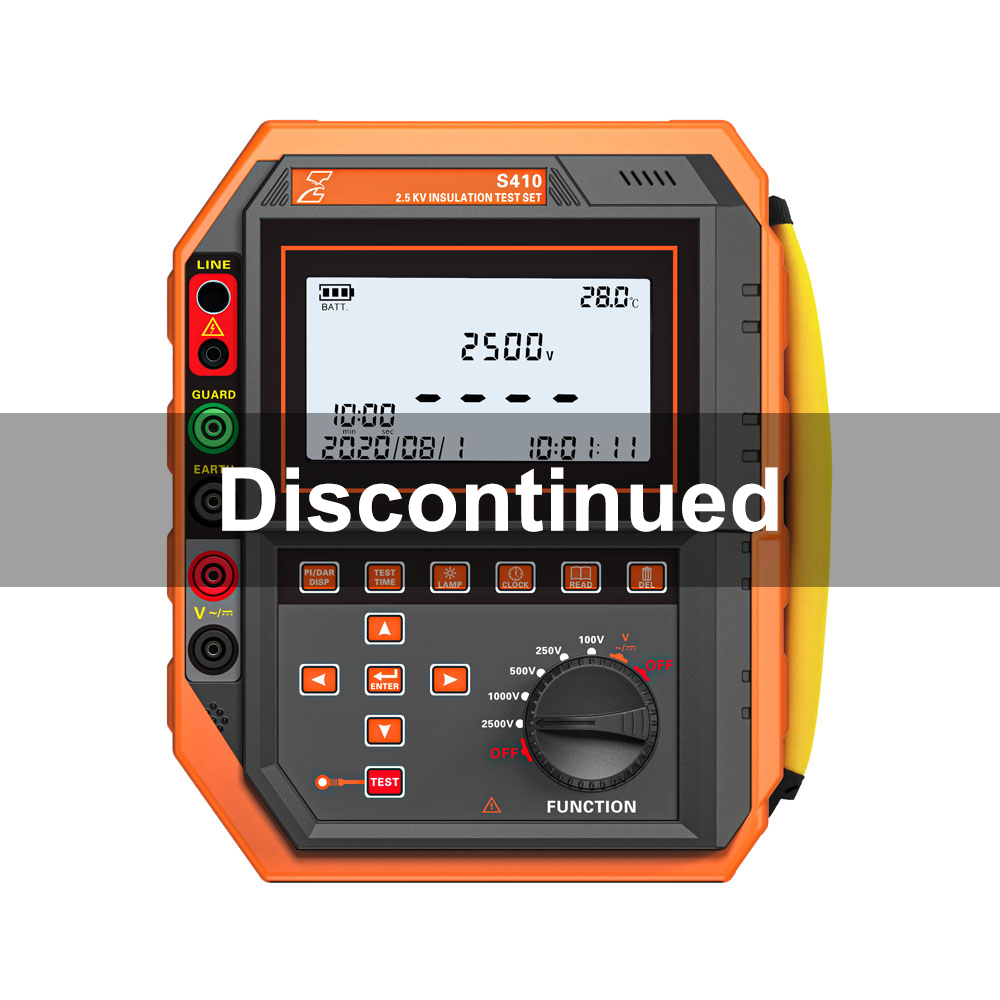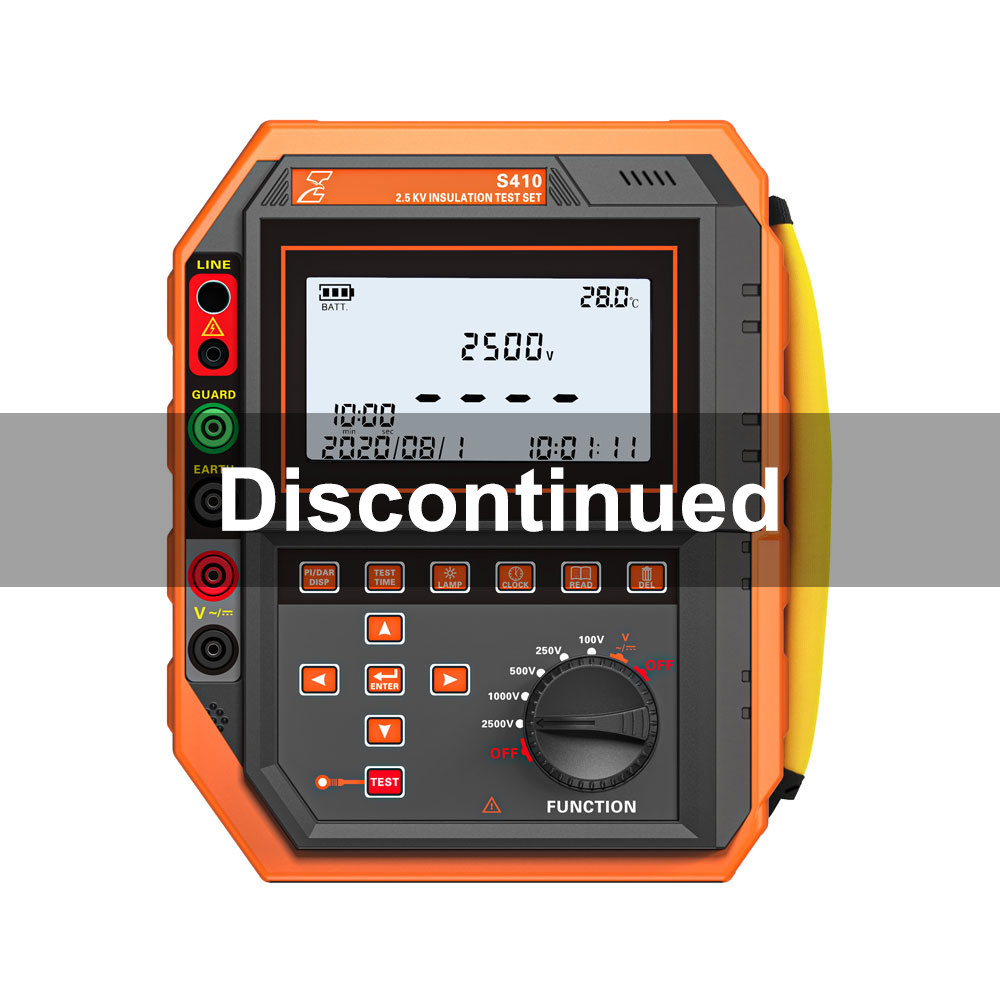Introduction
Insulation Resistance testing refers to measuring the total resistance between two points separated by electrical insulation. It is testing the effectiveness of the dielectric is in resisting the flow of electrical current. Such tests not only can be useful for ensuring the quality of insulation when a product is first manufactured but also over time as the product is used. Insulation deterioration can be a result of electrical or physical stress, vibration, excessively high or low temperature, dirt, oil, corrosive vapors or moistures, etc, and more than half of the equipment failures can be traced back to insulation breakdowns, it is, therefore, a critical area to monitor.
Problem
Determining if the insulation is at a high enough level that ensures the electrical system can run safely.
Solution
Using the S410/S420 for regular insulation resistance testing is one of the most cost-effective methods to identifying aging electrical instruments. It allows the technician to identify poor/deteriorated insulation before any damages have been done to the electrical system.
The Insulation Test Sets makes measurements by using the ohm’s law with the 3-terminal method, which is much more accurate than the 2-terminal method. An additional Guard Terminal provides a return circuit for leakage currents that bypasses the meter, providing users with a more precise result. The instrument is also able to automatically calculate the absorption ratio (DAR) and polarization index (PI), giving users a comprehensive diagnostic of the insulation result.
Difficulties
Benefits
- DAR and PI ratio
- Automatic discharge
- Guard terminal
- Voltage measurement
- 0.01MΩ resolution
- 2.5kv or 5kv model
- Range: 0.01MΩ~5TΩ


